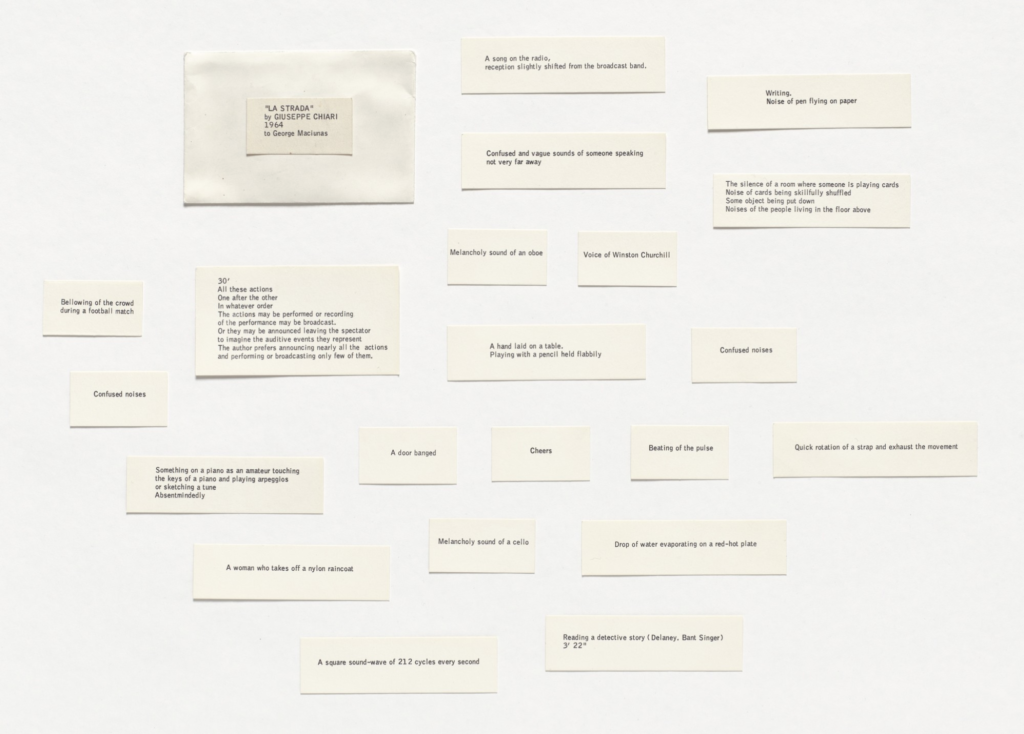
- What kinds of forms and practices emerge when we turn away from the new and attend to the persistent, unsettled, and non-digital?
- What tensions might these forms and practices create with our typical practices of attribution and impact?
- How does sidelining the technological new allow us to pay attention to things in a different manner?
These three questions are at the heart of a 2018 paper “From HCI to HCI-Amusement: Strategies for Engaging what New Technology Makes Old,” in which two HCI practitioners resist the formal logic and structure of design workshops and instead take inspiration from the Fluxus movement to develop a set of “HCI-amusements.”
In the 1960s and 1970s, Fluxus emerged as an interdisciplinary creative practice in which artists, composers, designers, and poets engaged in experimental art that emphasized the process (research, archive, iterative “critical making”) rather than a finished output. Fluxus was characterized as a shared posture and language towards making, rather than an art movement. It was also decidedly “anti-art” in that artists strove to eliminate boundaries between “art” and the “non-art” spaces by integrating an iterative creative practice into everyday life, using everyday objects. The result was a set of art objects that were radically accessible.

In a parallel effort towards “critical making,” UC Berkeley offers a class aimed at getting students to think about the role of discomfort in design (see the paper “Uncomfortable Interactions” for a theoretical overview). Similarly, the project “Disobedient Objects” is a cookbook of sorts for subverting the utility of various objects, and serves as a conceptual starting point for thinking about “making the familiar unfamiliar.”
I’m thinking about these three questions now:
- How do we attend to the non-digital in order to sensitize ourselves to new forms and processes?
- Given that human-centered and “persuasive” design are tools that have been co-opted by capitalism, what tactics can we use to subvert HCI? How do we inject friction, noise, slowness, and discomfort into design interactions?
- How do we design interfaces that are uncomfortable and subversive?
- What new design patterns might emerge?